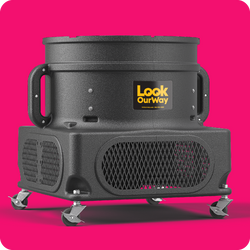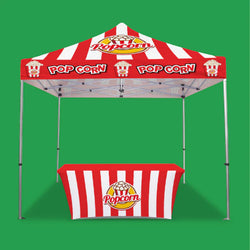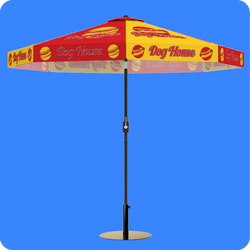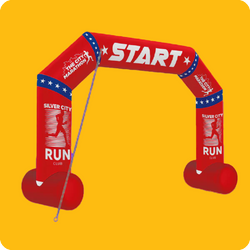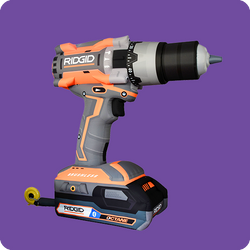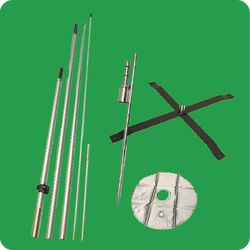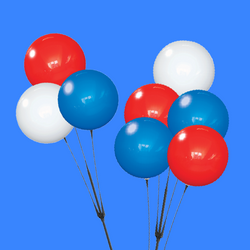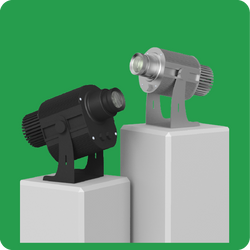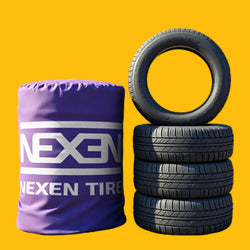How Much Weight Should be Used to Hold Down a Canopy Tent & Other Best Practices
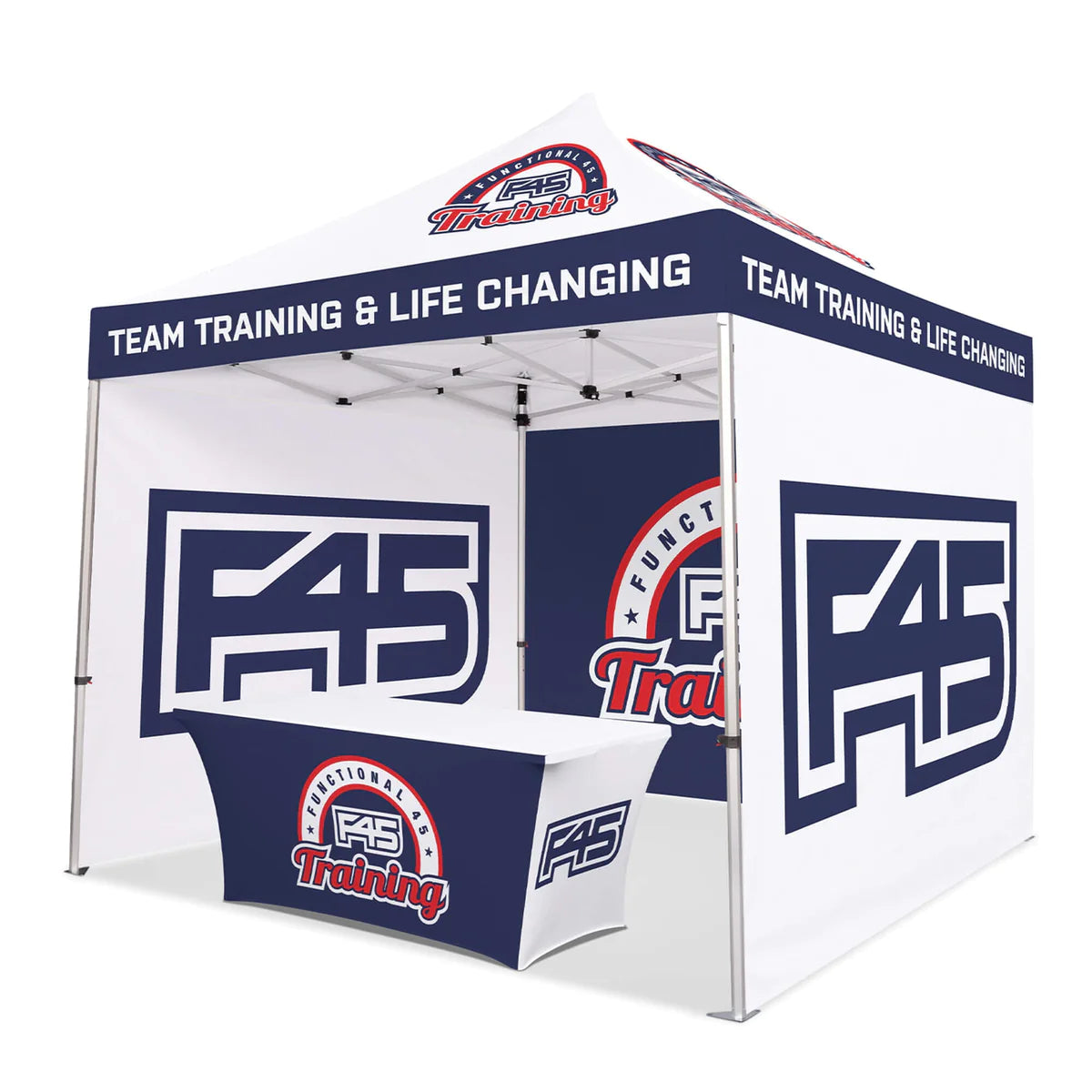
As the sun shines brightly overhead or a gentle breeze wafts through the air, something is enchanting about the allure of a canopy tent. Yet, ensuring its stability in different conditions is an art in itself. How much weight should you use to secure a canopy tent?
This guide will help you determine the optimal weight to anchor your tent against winds and other factors. We'll also give you some expert tips to extend its lifespan.
How Much Weight Does a Canopy Tent Need?
When stabilizing a canopy tent, the necessary weight can vary based on multiple factors, including the tent's size, design, and the potential weather conditions it might encounter.
Tent manufacturers and industry experts commonly recommend using weights ranging from 25 to 50 pounds per leg for general use. You should increase the weight as the tent size grows or when anticipating stronger winds.
Conducting a thorough assessment of the location and anticipated weather conditions before setting up your canopy tent is fundamental. Additionally, securely anchoring the pop-up tent with cinder blocks, sandbags, water weights, gallon water jugs, weight plates, or specialized canopy weights is advisable to ensure optimal stability.
Here's an insightful breakdown of how much weight different canopy sizes might require.
Small-Sized (10'x10')
For smaller-sized canopy tents, typically measuring 10 feet by 10 feet, the recommended weight range falls between 20 and 50 pounds per leg in non-windy conditions.
In windy conditions, we recommend a weight between 50 and 100 pounds. This will also vary depending on the surface, whether soil, sand, grass or a hard surface. This weight ensures stability during outdoor events, such as farmers' markets, fairs, or small-scale promotions.
Medium-Sized (10'x20')
These may require a weight range of 40 to 80 pounds per canopy leg. These larger directions make the tent more susceptible to wind resistance, especially in open spaces or at events where moderate winds might occur. You should use a weight between 100 and 250 pounds in windy conditions.
Large Canopy Tents (20'x20' or Bigger)
These sizable structures might require 120 pounds or more per leg to ensure stability, particularly in areas prone to gusty winds or adverse weather conditions.
How Do You Protect a Canopy Tent from Weather?
Canopy covers
Investing in high-quality canopy covers designed for weather resistance can significantly enhance your tent's durability. Opt for covers crafted from heavy-duty, weatherproof materials such as polyester and vinyl.
Seam sealing and waterproofing
This involves reinforcing the stitching to prevent water seepage through seams, ensuring an additional layer of protection against moisture. Waterproofing treatments, such as fabric sprays or sealants, create a water-resistant barrier on the tent.
Canopy tent weights and stabilization
Ensuring your tent is properly anchored with appropriate weights is essential to protecting it from weather-induced damage. Use sturdy tent weights, concrete blocks, weight bags, sandbags, and water weights distributed evenly across each canopy pole to fortify the tent's stability. This prevents movement during winds and minimizes the risk of damage caused by flapping or sudden gusts.
What Color Canopy Should I Choose To Stay Cool In Hot Weather?
The color of your pop-up canopy tent can significantly impact its temperature regulation, especially during hot weather conditions. Here are a few things to consider:
Optimal color choices
Lighter colors, particularly white or light pastel shades, tend to reflect sunlight rather than absorb it, resulting in a cooler interior beneath the canopy. White canopies reduce heat absorption and maintain a cooler environment than dark-colored canopies.
Reflectivity
Colors with higher reflectivity, such as white, ivory, light grey, or pale blue, efficiently bounce off sunlight, reducing the heat the fabric absorbs. These hues can create a more comfortable and cooler space beneath the tent, ideal for outdoor events or gatherings during warmer seasons.
Custom canopy options
Consider opting for custom canopy tents that offer versatility in color selection. For instance, Look Our Way provides customizable options, allowing you to choose lighter-colored fabrics or mix-and-match colors to create a visually appealing yet cooler canopy.
Personalization and branding
While color choice impacts temperature regulation, it's equally important to balance functional benefits with branding and personalization. Opt for canopy colors that align with your brand identity or event themes while keeping in mind the heat regulation properties of lighter shades.
How Do You Stabilize a Canopy Tent in High Wind Conditions?
Remove sidewalls
Consider removing the sidewalls and any additional accessories attached to the canopy during windy conditions. Side walls act as wind catchers, increasing the tent's vulnerability to gusts. Detaching them reduces wind resistance and minimizes the tent's exposure to turbulent air, enhancing its stability.
Make use of windbreaks and natural barriers
When setting up the tent, consider positioning it near natural windbreaks or barriers, such as buildings, trees, or solid structures. These barriers can provide additional protection and reduce the impact of gusts.
Properly anchor the tent
Use suitable weights, such as sandbags or water weights, and secure them to each tent leg. Ensure even distribution of enough weight to prevent tilting or imbalances that may compromise stability. You can also use tie-down straps.
Adjust the tent height
Most canopy tents allow height adjustment. Lowering the tent closer to the ground decreases its vulnerability to strong winds.
Use guy ropes
Properly tensioned guy ropes or bungee cords anchored to the ground can offer supplementary stability, especially for larger canopy tents or on a windy day.
How Do I Extend the Life of a Canopy Tent?
Extending the life of your canopy tent requires diligent care and adherence to specific maintenance practices. Here are some tips to maximize the longevity of your canopy:
Proper assembly and disassembly
Follow the manufacturer's instructions carefully during setup and take-down to prevent undue stress on the frame or fabric. Avoid forcing parts and over-tightening components, as this will lead to damage and compromise its lifespan.
Regular cleaning and maintenance
Routine cleaning is essential to prevent dirt, debris, or mildew buildup on the canopy fabric. After each use, gently wipe down the fabric with a mild soap solution and water. Ensure the tent is completely dry before storing it to prevent mold growth or fabric deterioration.
Proper storage practices
Store the tent in a clean, dry area away from direct sunlight and moisture. Avoid leaving the tent outside for too long when it's not being used, as constant exposure to the elements can speed up the wear and tear process.
Frequently replace the canopy top
The effectiveness of your tent relies heavily on the canopy top's quality. They often endure harsh weather exposure, so they're prone to wearing out. Hence, it's practical to replace them regularly to ensure optimal performance and durability.
Do You Need a Canopy Tent?
A canopy tent can be invaluable, offering shelter and versatility for various outdoor activities and events. The benefits are extensive. They protect against the elements and provide shade to attract foot traffic.
If you're still contemplating whether a canopy tent suits your requirements or if you have further inquiries, our experts are here to help. Contact us today for personalized guidance, product information, and any lingering questions.



